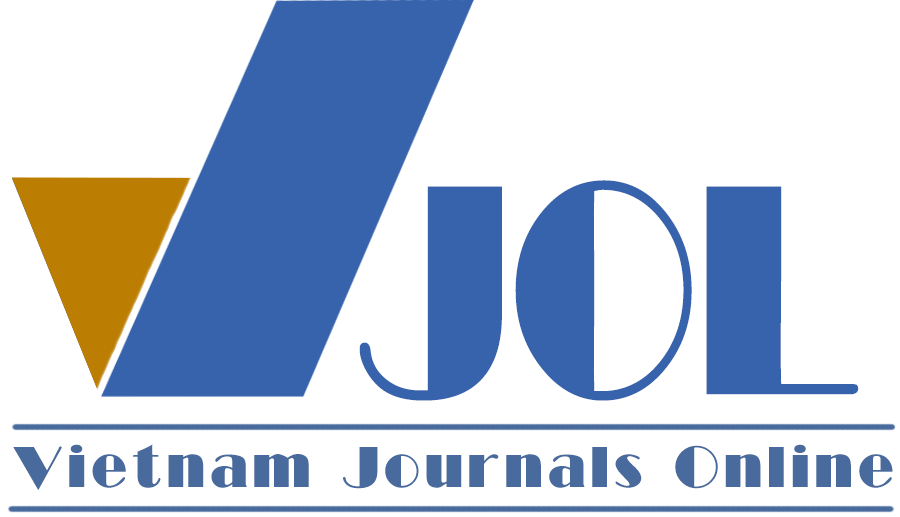Comparative analysis of the impacts of CPTPP and EVFTA on Vietnam’s textile export activities
Authors
DOI: https://doi.org/10.57110/vnu-jeb.v4i2.255Keywords:
CPTPP, EVFTA, textile industry, comparative analysisReferences
Assarson, J (2005). The Impacts of the European Union - South Africa Free Trade Agreement. Department of Economics- Uppsala University.
Binh, M (2022). Inflation in Vietnam is relatively low compared to other economies. VnEconomy. < https://vneconomy.vn/lam-phat-o-viet-nam-tuong-doi-thap-so-voi-cac-nen-kinh-te-khac.htm> Accessed 5.12.2023.
Butt, W.A. (2008). Pakistan’s Export Potential: A Gravity Model Analysis, SBP Working Paper Series 23, State Bank of Pakistan, Research Department.
Do, T. T. (2006). A gravity model for trade between Vietnam and twenty-three European countries. Dalarna University, School of Technology and Business Studies, Economics.
Duong, N. B. (2016) Vietnam-EU Free Trade Agreement: Impact and Policy Implications for Vietnam. SECO/WTI Academic Cooperation Project Working Paper Series 2016/07.
G., Jan., R., Werner., S., Cornelia., T., Bernhard., V. A., Rudi., & G., Hannes. (2018). The economic and social effects of the EU Free Trade Agreement with Vietnam. Austrian Foundation for Development Research.
Grant, J & Lambert, D.M (2008). Do regional trade agreements increase members’ agreement trade. American Agricultural Economic Association, 90(3), 765-782.
Hang, N. T. T., & Thanh, N. D. (2010). Macroeconomic Determinants of Vietnam’s Inflation 2000-2010: Evidence and Analysis. Vietnam Centre for Economic and Policy Research (VEPR).
Hatab, A. A., Romstad, E., & Huo, X. (2010). Determinants of Egyptian agricultural exports: A gravity model approach. Modern Economy, 1, 134- 143.
Hoan, P.T. (2021). Trade effects of the textile industry in the context of the Comprehensive and Progressive Agreement for Trans-Pacific Partnership. Eurasian Journal of Economics and Finance, 7(4), 50-58.
Huong, T.T.T. & Manh, P.T. (2021). Improving the efficiency of Vietnam’s textile and garment industry in the context of the new EVFTA agreement. The B version of the Journal of Science and Technology of Vietnam, 63(4). https://doi.org/10.31276/VJST.63(4).08-12
Huong, V., & Phuong, N. (2016). Assessing the sectoral impact of the Vietnam-EU Free Trade Agreement: Utilizing trade indices. VNU Journal of Economics and Business, 32(3), 28-38.
Huy, T (2022). Inflation in 2022: Significant pressure, but still within manageable levels. Socialist Republic of Vietnam-Government News. <https://baochinhphu.vn/lam-phat-nam-2022-suc-ep-lon-nhung-van-trong-tam-kiem-soat-102220705172552221.htm> Accessed 5.12.2023.
Helga, K. (2005). A gravity model for exports from Iceland. CAM Working Papers. University of Copenhagen, Department of Economics, Centre for Applied Microeconometrics.
Koo, W. & Kennedy, P., & Skripnitchenko, A. (2006). Regional Preferential Trade Agreements: Trade Creation and Diversion Effects. Review of Agricultural Economics. 28. 408-415.
Korinek, J. & Melatos, M. (2009). Trade impacts of selected regional trade agreements in agriculture, OECD Trade Policy Papers, 87.
Krugman, P. R., Obstfeld, M., & Melitz, M. J. (2012). International Economics: Theory and Policy (9th ed.). Addison-Wesley.
Ministry of Industry and Trade. (2023). Vietnam import-export report 2022. <https://trungtamwto.vn/file/22356/bao-cao-xuat-nhap-khau-viet-nam-nam-2022.pdf> Accessed 5.12.2023.
Ngo, N.A (2021). Applying the gravity model to assess the impact of UKVFTA on Vietnam’s electronics exports to the UK market. Vietnam National University Press.
Nha, D. T. H. & Ha, N. T. H. (2018). Analysis of Vietnam’s agricultural exports to the EU market. TNU Journal of Science and Technology. 196(03), 23-129.
Phan, T. C. (2011). Vietnamese export-based economic growth model. VNU Journal of Economics and Business, 27(2011), 265-275.
Poyhonen, P. (1963) A Tentative Model for the Volume of Trade between Countries. Weltwirtschaftliches Archiv, 90, 93-100.
Sun, Lin & Reed, Michael. (2010). Impact of free trade agreements on agricultural trade creation and trade diversion. American Journal of Agricultural Economics. 92, 1351-1363.
T, Yihon & Weiwei, W. (2006). An analysis of the trade potential between China and ASEAN within China-ASEAN FTA. University of International Business and Economics, Beijing, China.
Teboho, J. M & Joel, H. E (2016). Determinants of South Africa’s exports of agriculture, forestry and fishing products to SADC: A gravity model approach. Economia International, 69(3), 248-265.
Tinbergen, J. (1962). Shaping the World Economy: Suggestions for an International Economic Policy. The Twentieth Century Fund, New York.
Tuan, N. V. (2020). The current situation and solutions to promote Vietnam’s export of textiles and garment to the EU market when joining EVFTA. Trade and International Economic Impacts on Vietnamese Firms-TEIF, 587-604.
Tuyet, L.T.A. (2022). Opportunities and challenges for Vietnam's trade in CPTPP. Journal of University of Shanghai for Science and Technology, 24(2), 352-371.
Van, S. H & Hoi, Q. L. (2019), The impact of participation in the comprehensive and progressive trans-pacific partnership agreement on exports: The case of Vietnam. Management Science Letters 9, 1269-1280.
Vinh, D. Q., & Phuong, L. H. (2022). Determinants of the export efficiency of Vietnam’s textiles and garments to EU countries – A stochastic frontier gravity approach. Asian Economic and Financial Review, 12(8), 722-730.
Vu, B. D. Nguyen, T. P. T & Ngo, H. T. (2018). Analysis of factors influencing Vietnam’s exports to the EU market using a gravity model. Journal of Economics and Business Admirations, 07, 72-78.
Yanıkkaya, H. (2003). Trade openness and economic growth: A cross-country empirical investigation. Journal of Development Economics. 72, 57-89.
Downloads
Downloads
Published
Abstract View
PDF Downloaded
How to Cite
Issue
Section
License
Copyright (c) 2024 Tran Thi Mai Thanh, Vu Ba Duy, Luong Minh Ngọc, Nguyen Thanh Thao, Duong Thi Thu

This work is licensed under a Creative Commons Attribution-NonCommercial 4.0 International License.
by VNU Journal of Economics and Business
Most read articles by the same author(s)
- Tran Thi Mai Thanh, Duong Thu Huyen, Au Thi Thanh Hiep, Dinh Hoang Linh Mai, Nguyen Thi Nha Nam, Nguyen Duy Dat, Luong Thuy Linh, Analyzing the impact of the EVFTA on the importation of transportation vehicles, parts, and components into Vietnam from the EU: A SMART model approach , VNU University of Economics and Business: Vol. 4 No. 4






